What if your garden could save a life? Possible food shortages in the event of a major crises is a real possibility these days. Why not have fun playing in the garden for a good cause?
Community gardening is such a fantastic way to bring people together while nurturing the environment! It’s all about individuals from a neighbourhood or community coming together to cultivate a shared plot of land, often for growing fruits, vegetables, herbs, or flowers. These gardens promote social interaction, physical activity, and environmental stewardship. They can also enhance food security, provide educational opportunities, and foster a sense of pride and ownership in the community. Whether it’s turning a vacant lot into a vibrant green space or revitalizing neglected areas, community gardens have a way of beautifying neighbourhoods and strengthening bonds among residents.

Promoting Community Health and Well-being
Community gardening encourages physical activity and access to fresh, nutritious produce, promoting healthier lifestyles among participants. Engaging in gardening activities can reduce stress, improve mental well-being, and foster a sense of connection and belonging within the community. Additionally, sharing the harvest fosters a spirit of generosity and support among neighbours, creating a more resilient and cohesive community.

Environmental Sustainability
By utilizing sustainable gardening practices such as composting, water conservation, and organic growing methods, community gardens contribute to environmental conservation efforts. They help mitigate urban heat island effects, reduce storm water runoff, and increase biodiversity in urban areas. Through education and advocacy, community gardens also raise awareness about the importance of sustainable living and environmental stewardship.

Enhancing Food Security and Access
Community gardens play a vital role in addressing food insecurity by providing access to fresh, locally grown produce, especially in food deserts or low-income neighbourhoods. Participants can supplement their diets with nutritious fruits and vegetables grown in their own community, reducing reliance on processed or imported foods. Additionally, surplus harvests can be donated to local food banks or shared among community members in need, further supporting food security initiatives.

Building Social Connections and Empowerment
Community gardening fosters social connections and strengthens bonds among neighbours, creating opportunities for collaboration, learning, and skill-sharing. Participants from diverse backgrounds come together to work towards a common goal, fostering a sense of solidarity and mutual support. Gardening activities provide platforms for inter-generational interaction, cultural exchange, and community engagement, empowering individuals to take collective action and effect positive change in their neighbourhoods.
30 House City Block Garden Plan
Self-sustaining, grid-independent garden system.

1. Central Layout & Structure
Total Area: Each house dedicates a portion of its backyard/front yard to the communal garden, with about 500-700 sq. ft. per house for vegetables, creating a network of garden patches across the block. Shared spaces such as vacant lots or side yards can be used for larger crops.
Central Plot. One house can allocate its larger area or a communal plot can be established for bigger or perennial crops such as potatoes, squash, corn, and fruit trees.
Raised Beds. Built to optimize space and make the garden more manageable. Raised beds offer better soil control, reduce pests, and improve access during different weather conditions.

2. Basic Veggies for a Healthy Diet
Leafy Greens. Kale, spinach, Swiss chard, and lettuce. Fast-growing, providing essential vitamins (A, C, K) and minerals (iron, calcium).
Root Vegetables. Potatoes, carrots, beets, radishes. These provide essential carbohydrates, fiber, and micronutrients like potassium.
Legumes. Beans (pole beans and bush beans), peas. Essential for protein and fiber.
Nightshades. Tomatoes, peppers, eggplants. Rich in vitamins and antioxidants.
Cucurbits. Zucchini, cucumbers, squash. High in water, vitamins, and minerals.
Alliums. Garlic, onions, leeks. Nutrient-dense, aiding in immune function and cardiovascular health.
Cruciferous Vegetables. Broccoli, cauliflower, Brussels sprouts, cabbage. Provide important phytonutrients, fiber, and vitamins.
Herbs. Parsley, cilantro, basil, thyme. Flavorful and high in antioxidants.
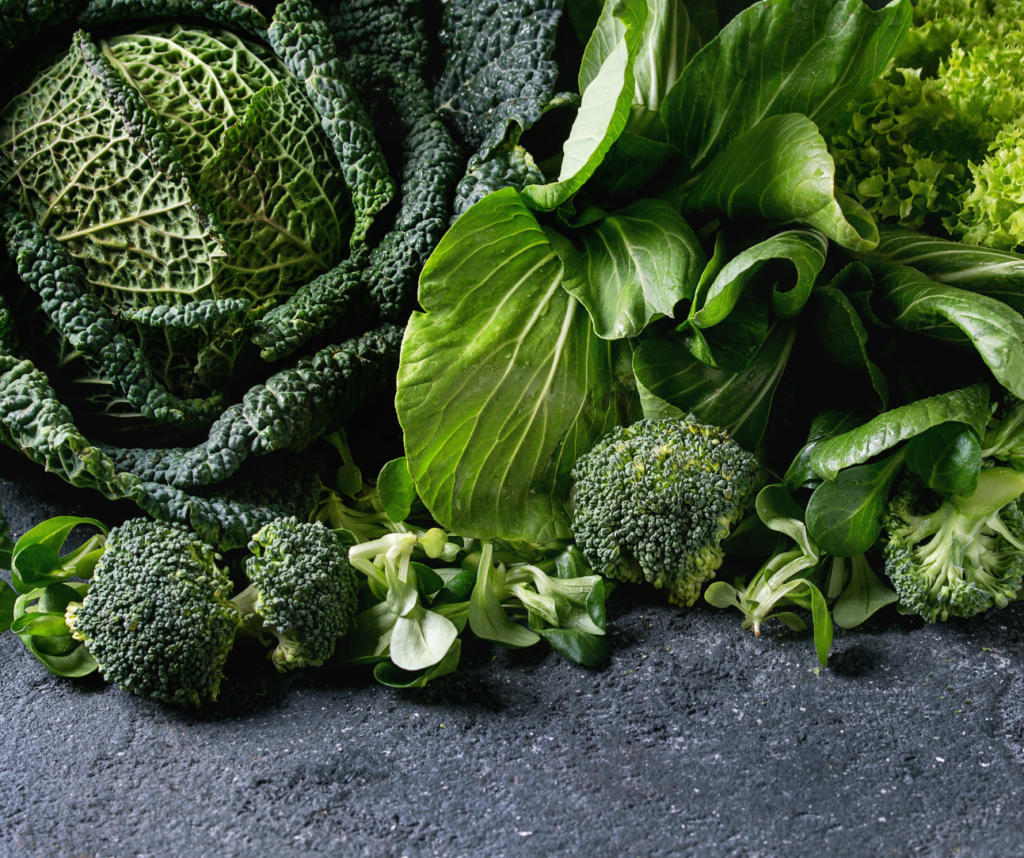
3. Companion Planting
To maximize yield and reduce pests, companion planting principles will be used:
Marigolds around the garden beds to deter pests.
Beans near corn and squash for the Three Sisters planting method.
Garlic and onions near leafy greens for natural pest control.
Herbs like basil near tomatoes to enhance flavor and repel insects.
Companion planting strategically pairs plants to benefit each other, enhancing garden health and productivity. This approach improves growth, minimizes chemical use, and fosters a balanced, resilient ecosystem, making gardens more efficient and sustainable.

4. Water Conservation and Irrigation
Rainwater Harvesting. Install barrels at each house to collect rainwater for irrigation.
Drip Irrigation. Low-water-use systems can be installed using stored water, reducing waste and ensuring plants are well-watered.
Water conservation and efficient irrigation are crucial for sustainable agriculture and environmental health. By employing methods such as drip irrigation, rainwater harvesting, and soil moisture management, we can minimize water waste and ensure that plants receive the precise amount of moisture they need. These practices not only enhance crop yields but also help preserve valuable water resources, reduce runoff, and protect ecosystems. Adopting innovative irrigation techniques and conserving water supports long-term agricultural productivity and environmental stewardship.
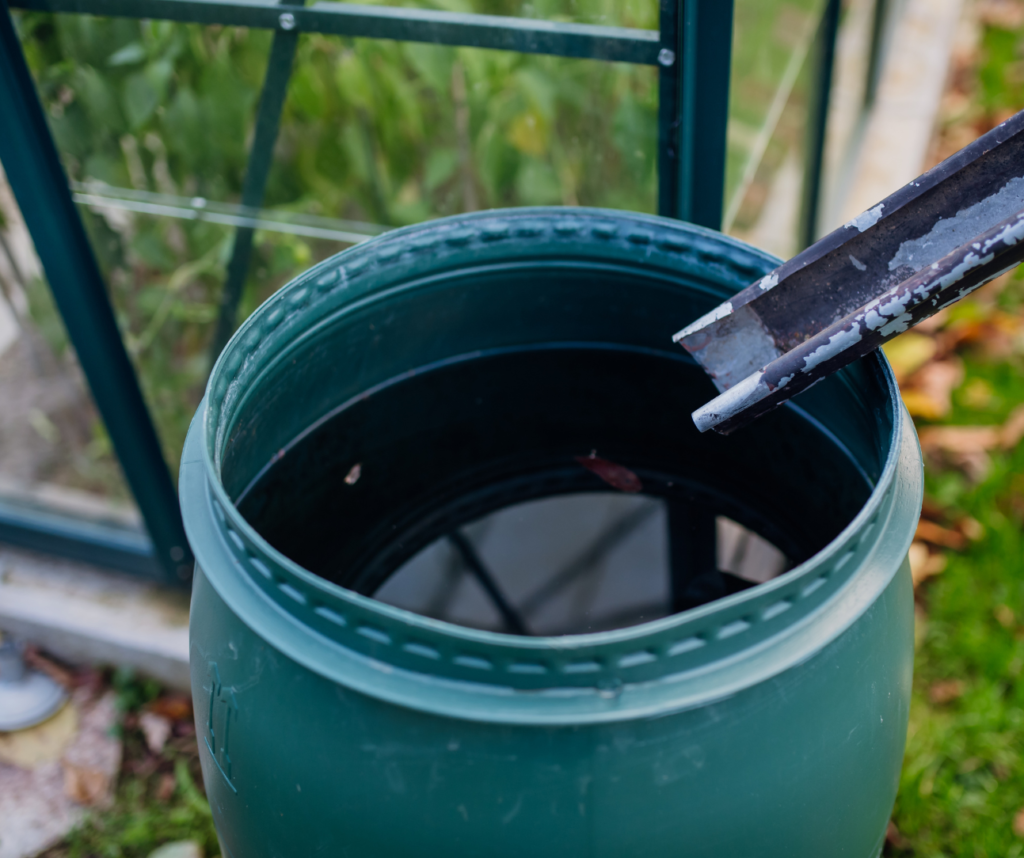
5. Composting
Set up communal compost bins at multiple points in the block for organic waste. This can be used to create rich soil over time and reduce reliance on external fertilizers.
Communal compost bins offer a shared solution for recycling organic waste in neighbourhoods or communities. By pooling kitchen scraps, yard waste, and other compostable materials, these bins create nutrient-rich compost that can be used to enrich local gardens and green spaces. This collective effort reduces landfill waste, cuts down on greenhouse gas emissions, and promotes sustainable practices. Communal composting also fosters a sense of community and environmental stewardship, making it a practical and eco-friendly choice for collective waste management.
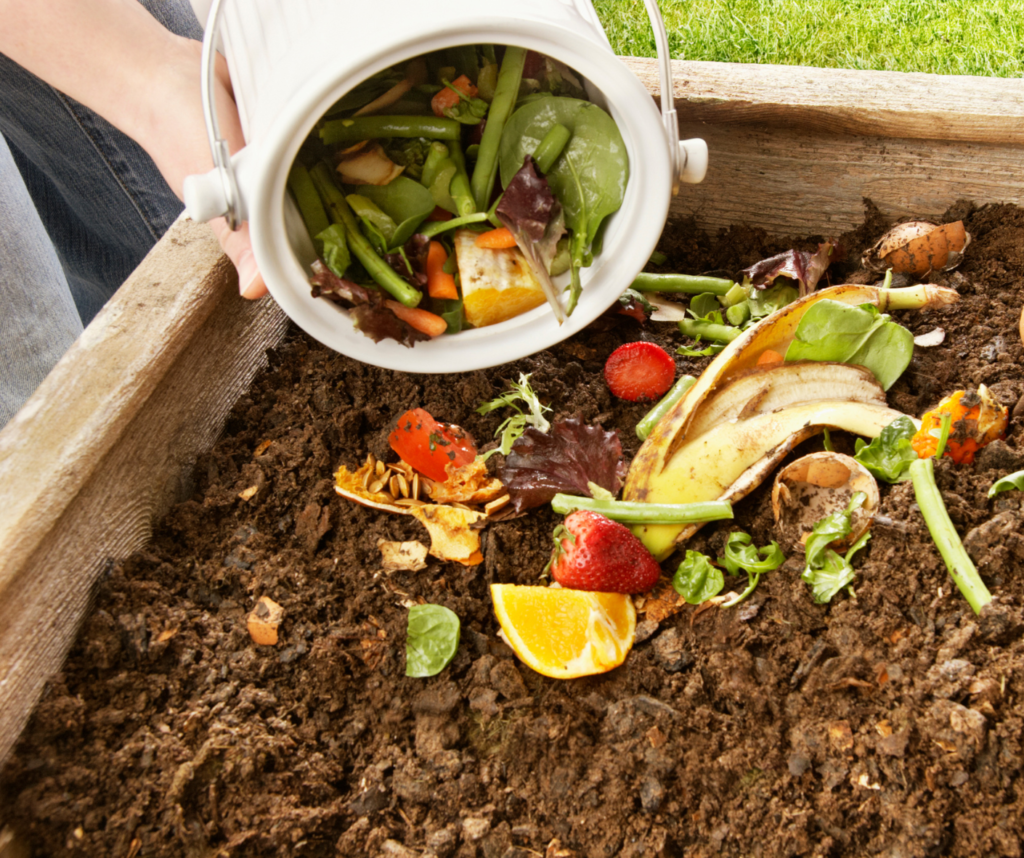
30+ Unit Apartment Building Garden Plan
Garden Layout

1. Raised Bed Gardens (Garden Containers)
Space Management. Given the limited urban space, raised beds or container gardens can be set up on rooftops, balconies, or communal outdoor spaces.
Planter Dimensions
– Each bed should be about 4×8 feet.
– Aim for at least 12-15 raised beds or containers to provide sufficient vegetables for the 30 units.
Container gardens are versatile and space-efficient, allowing plants to thrive in pots or other containers. Ideal for urban environments or areas with limited soil, they enable gardeners to grow vegetables, herbs, and flowers on balconies, patios, or windowsills. By controlling soil quality and moisture levels, container gardens can maximize yields and minimize pests. This approach offers flexibility, accessibility, and a chance to cultivate a green space in virtually any setting.
*Follow steps 2 – 5 above to complete plan.


Security Plan for Grid-Down Crisis
1
Perimeter & Community Watch
Create a neighbourhood watch program where households take shifts monitoring the block, particularly at night. Establish a watch rotation among residents, dividing them into shifts. Consider forming groups of 3-4 individuals per shift for 24/7 coverage. Perimeter checks and garden protection should be included, ensuring that crops are not stolen or damaged. Fencing and natural barriers (such as hedges or trees) can enhance security without feeling militarized.
Use whistles or low-tech alarm systems like bells to alert the community to potential threats.
2
Communication
Invest in two-way radios with a designated frequency for emergency communications when phones and the internet are unavailable. In a grid-down situation, radios with rechargeable batteries or hand-crank chargers will allow communication across different parts of the block. Establish pre-designated meeting points for emergencies where block residents can gather safely.
Have signal systems (e.g., colored flags) at each house to indicate help is needed.
3
Energy Independence
Solar-powered lights and hand-cranked radios can provide lighting and news.
Encourage each home to have basic solar panels for charging devices, especially communication tools.
4
Food Security
Build root cellars or underground storage areas for long-term vegetable preservation.
Encourage canning and fermenting to store excess produce, reducing food waste and ensuring a stable food supply.
5
Shared Resources
Set up a community tool library for gardening and basic maintenance, where tools like shovels, hoes, and axes are stored communally but tracked for usage.
Encourage bartering systems for any non-perishable goods that neighbours might need in grid-down scenarios.
How to Keep Critters Out of Your Garden
Keeping critters out of your backyard garden can be a challenge, but there are several effective strategies you can use to protect your plants and vegetables:
1. Fencing
Installing a fence around your garden is one of the most reliable ways to keep out larger animals like deer, rabbits, and dogs. Choose a sturdy fence that extends several feet underground to deter burrowing animals. For smaller critters, consider using finer mesh or chicken wire fencing.
2. Natural Repellents
Certain plants and natural substances can act as repellents for critters. For example, planting marigolds, garlic, or chives around your garden can deter pests with their strong scents. Sprinkling crushed eggshells, coffee grounds, or cayenne pepper around plants can also discourage animals from nibbling.
3. Motion-Activated Sprinklers
Motion-activated sprinklers are an effective deterrent for many animals, including deer, rabbits, and even cats. These devices spray water when they detect motion, startling and discouraging critters from entering your garden.
4. Netting and Row Covers
Use netting or row covers to physically protect plants from birds, insects, and small animals. Secure the netting tightly over your garden beds or individual plants to prevent access while still allowing sunlight, air, and water to reach your crops.
5. Companion Planting
Companion planting involves strategically placing plants that naturally repel pests next to those that are vulnerable. For example, planting basil or mint alongside tomatoes can help deter pests that commonly attack tomato plants.
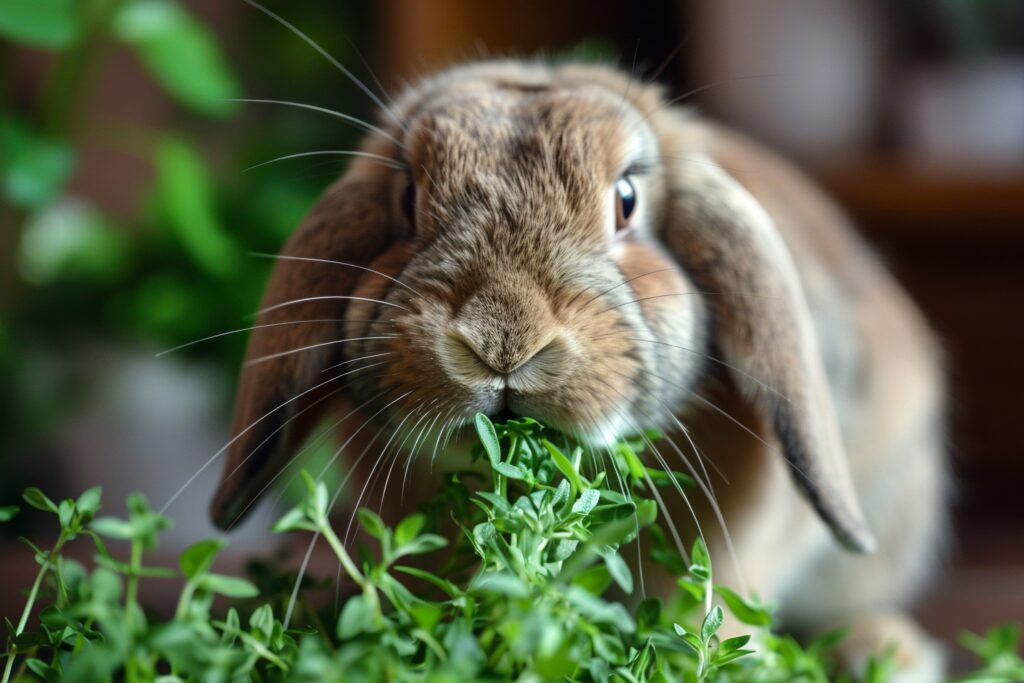
6. Raised Beds
Consider gardening in raised beds, which can make it more difficult for critters to access your plants. Raised beds can be fitted with hardware cloth or wire mesh on the bottom and sides to further protect against burrowing animals.
7. Regular Maintenance and Cleanliness
Keep your garden tidy by removing weeds, fallen fruits, and other debris that can attract critters. Regularly inspect plants for signs of damage or pests so you can take action promptly.
8. Scare Tactics
Use scare tactics such as wind chimes, reflective tape, or scarecrows to frighten away birds and small animals. Change the position of these deterrents occasionally to prevent critters from becoming accustomed to them.
9. Secure Compost and Trash
Critters are attracted to food sources, so ensure that compost bins and trash cans are securely covered. Avoid composting meat, dairy, or oily foods that can attract unwanted pests.
10. Chemical Repellents
As a last resort, consider using chemical repellents designed to deter specific animals. Follow the manufacturer’s instructions carefully and use these products sparingly, especially if you grow edible crops.
5 Easy Foods To Grow
Grow and Enjoy: Easy Foods to Thrive in Your Community Garden!
Hey there, green thumbs and veggie enthusiasts! Are you ready to dig into the wonderful world of community gardening? Whether you’re a seasoned gardener or a total newbie, there are some super-easy foods that practically grow themselves and are perfect for your community garden plot. Let’s dive in and get those green thumbs itching to plant!
1. Radishes: Spicy and Speedy!

First up, we’ve got radishes—nature’s way of giving you an instant garden gratification! These little guys are lightning fast to grow, ready to munch on in just about a month. Plus, they come in all sorts of funky colors and shapes, so you can add a splash of vibrancy to your garden salad. Plant them, forget them (well, not entirely), and get ready to crunch!
2. Salad Greens: Mix it Up!

Who doesn’t love a fresh salad straight from the garden? Lettuce, spinach, arugula—you name it, these leafy wonders are easy-peasy to grow. They’re pretty low-maintenance and can even thrive in containers if your garden space is limited. Plus, harvesting your own salad greens feels like you’re basically living off the land (even if it’s just a small patch of it).
3. Tomatoes: Juicy Delights!

Ah, the crown jewel of the garden: tomatoes! Whether you’re into cherry tomatoes bursting with sweetness or big beefsteaks perfect for sandwiches, tomatoes are surprisingly forgiving for beginner gardeners. Just give them some sun, water, and a bit of love, and they’ll reward you with a bounty of deliciousness all summer long. Pro tip: support them with stakes or cages to keep those vine-y beauties thriving.
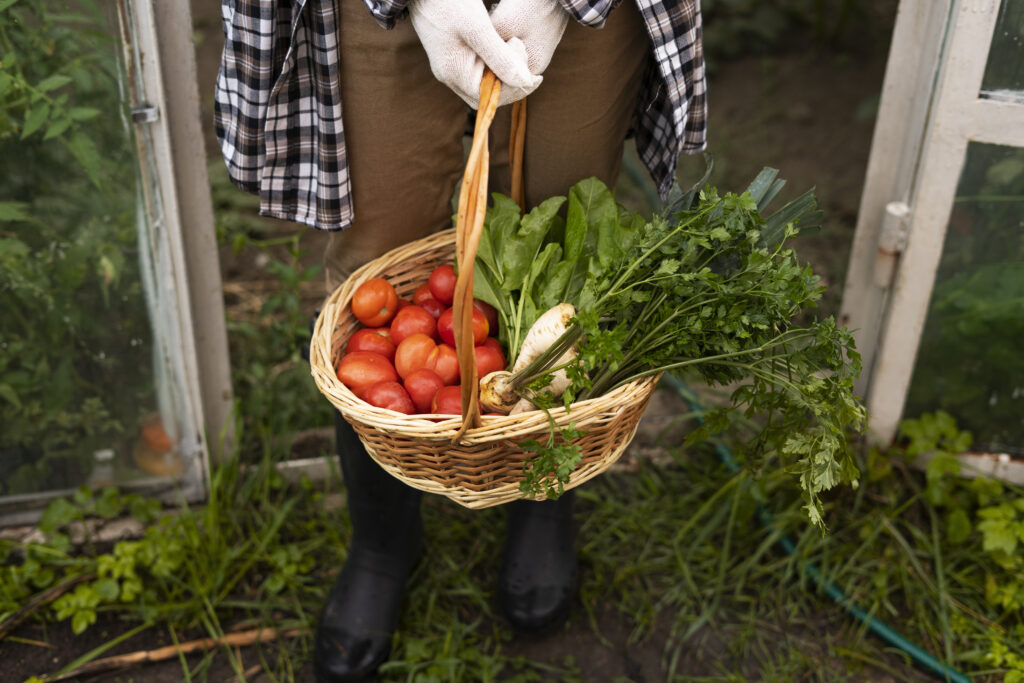
4. Herbs: Flavor Galore!

Let’s not forget about herbs—your secret weapon for turning any meal into a gourmet delight. Basil, parsley, cilantro, mint—the list goes on. These aromatic wonders are not only easy to grow but also add a burst of fresh flavor to everything from pasta sauces to cocktails. Plant them in pots or directly in the ground, and enjoy the satisfaction of snipping your own herbs whenever you need them.
5. Zucchini: Abundant and Versatile!

Last but definitely not least, say hello to zucchini—the garden gift that keeps on giving (and giving and giving). These prolific squash plants are like the Energizer Bunnies of the vegetable world. With just a couple of plants, you’ll soon find yourself with enough zucchinis to feed the entire neighborhood (seriously, be prepared to get creative with your zucchini recipes).
Get Growing and Have Fun!
So, there you have it—some of the easiest, most satisfying foods you can grow in your community garden. Whether you’re aiming for a bountiful harvest or just want to get your hands dirty and connect with nature, these veggies and herbs are your go-to pals. Grab your gardening gloves, gather your fellow gardeners, and let’s make this growing season the best one yet. Happy planting! 🌱
Composting Made Simple

1. Choose a Location
Find a spot in your garden that is well-drained and has good air circulation. The area should be convenient for you to access but not too close to your house, as compost can sometimes attract pests or have an odor.Ideally, the location should be shaded to prevent the compost from drying out too quickly, but it can also be in a sunny spot if you plan to monitor moisture levels carefully.

2. Prepare the Base
Start by laying down coarse materials like straw, small twigs, or wood chips to create a base layer. This helps with drainage and aeration, which are crucial for the composting process.The base should be about 6 inches deep.

3. Add Organic Layers
Alternate between “green” and “brown” materials:
Green materials are rich in nitrogen and include things like vegetable scraps, fruit peels, coffee grounds, grass clippings, and manure.
Brown materials are rich in carbon and include dried leaves, straw, newspaper, cardboard, and wood chips.
Start with a layer of brown materials, then add a layer of green materials on top. Each layer should be about 2 to 4 inches thick.
Continue layering until your heap is about 3 feet high, which is an optimal height for maintaining heat and microbial activity in the compost.

4. Maintain the Heap
Moisture: Keep the compost heap moist, like a damp sponge. If it’s too dry, add water; if it’s too wet, add more brown materials.
Aeration: Turn the compost heap with a pitchfork or shovel every 2-4 weeks to introduce oxygen, which speeds up the decomposition process and prevents odors.
Temperature: A well-maintained compost heap will generate heat. The internal temperature should reach between 130°F to 160°F (54°C to 71°C) to effectively break down materials and kill off pathogens. You can use a compost thermometer to monitor this.

5. Harvesting the Compost
After a few months to a year, depending on the materials and conditions, the compost should be ready. It will be dark, crumbly, and have an earthy smell.
You can sift the compost to remove any large, undecomposed pieces and then use the finished compost in your garden to enrich the soil.

6. Troubleshooting
Odor: If your compost smells bad, it may be too wet or have too much green material. Add more brown materials and turn the heap to improve aeration.
Slow Decomposition: If the compost isn’t breaking down, it may need more green materials, moisture, or turning to increase aeration.








